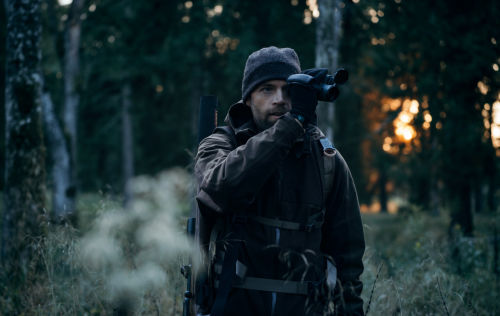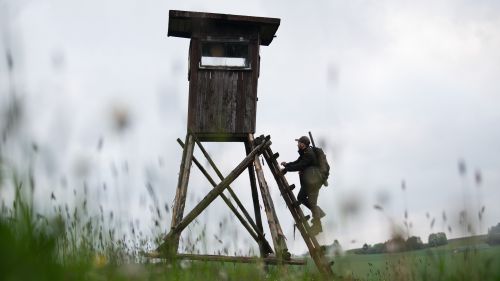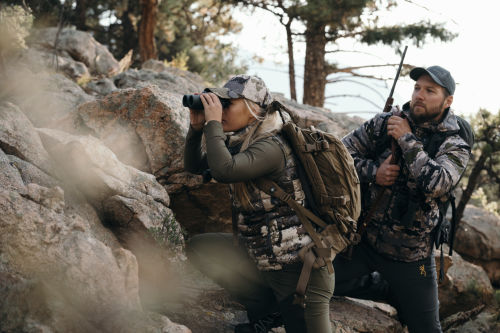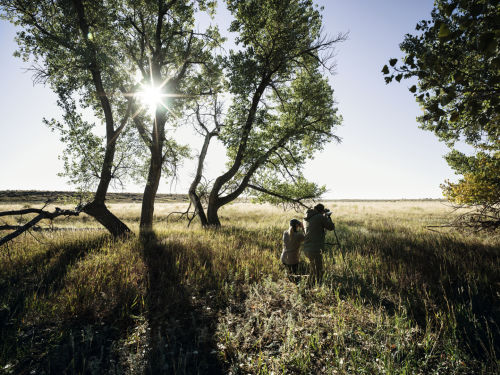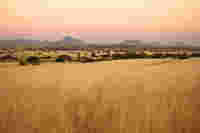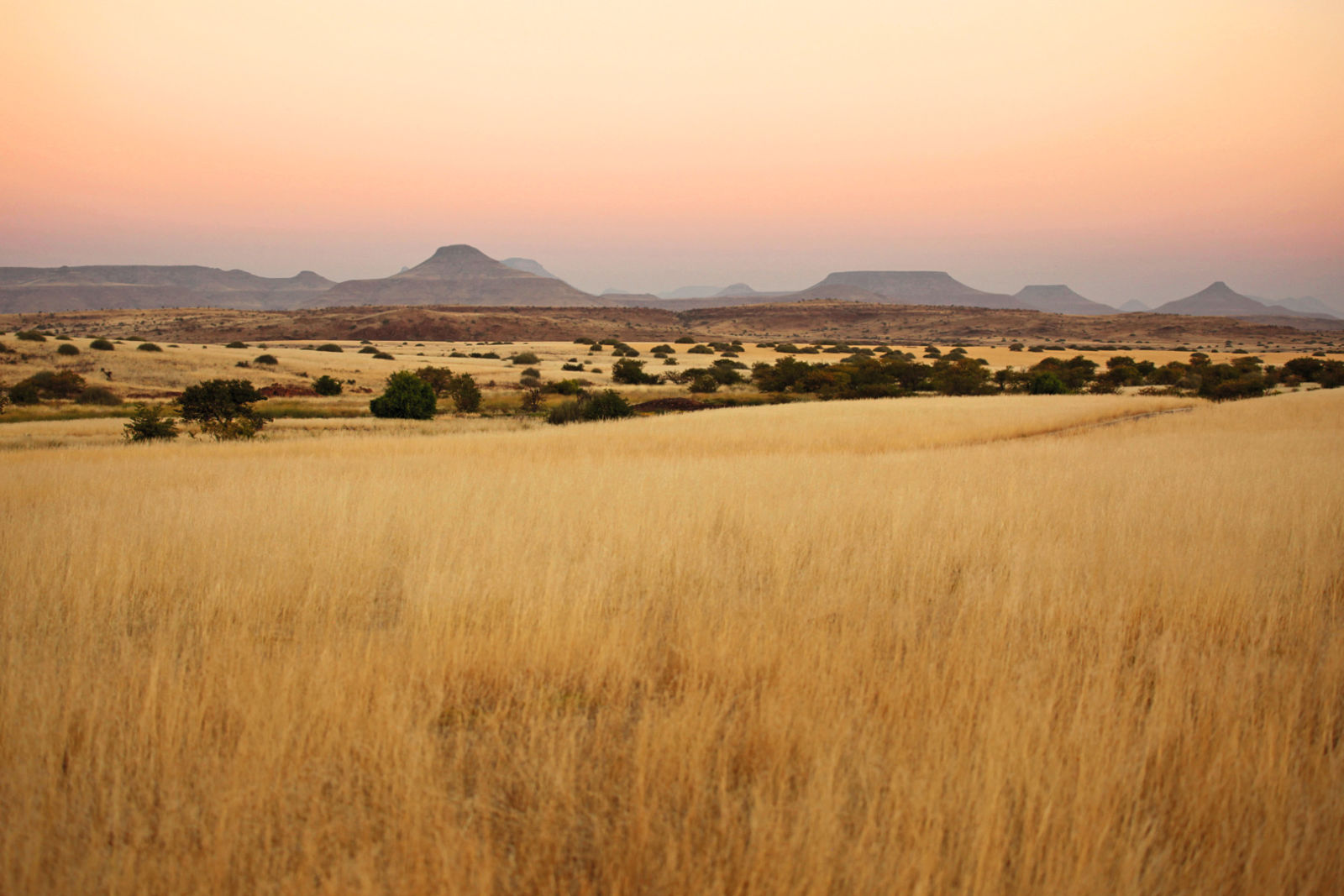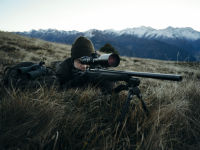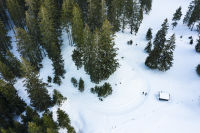Good news about wildlife conservation are rare. We mostly hear about species vanishing, habitats being exploited or harsh living conditions due to climate change.
However, there are also preservation stories that warm our hearts. Such a tale is the Nyae Nyae Conservancy’s success story. Thanks to a consistent agency and involvement of the local people (the San), game population numbers are rising, natural habitats are protected, and poaching is kept to a minimum in this conservation area, located in the north-east of Namibia. A true beacon of hope in terms of people and the natural world prospering together. The key to success was giving the lion’s share of the power and economic profits deriving from wildlife and hunting tourism to the local communities. Thus, protecting their natural resources became relevant to the development and prosperity of the San people. It is now in their best interest to sustain wildlife for generations to come.
CLOSER talked to Stephan Jacobs, professional hunter contracted by the Nyae Nyae Conservancy, about the role of sustainable hunting in preserving wildlife and nature.
What role does sustainable hunting play in the Nyae Nyae Conservancy?
Stephan Jacobs: Sustainable hunting plays a crucial role in this area. In fact, the wildlife in our region would not be able to exist in the way it does if it were not for sustainable hunting. It provides Nyae Nyae with more than 85% of its annual income, which is used for numerous projects and provides a major lifeline for the local community. The other 15% of revenue are generated through photographic safaris, filmmaking and sale of local handicraft. Taking into consideration that sustainable hunting means employment, financial assets and meat provided to the local population, it is absolutely vital to the livelihood of Nyae Nyae.
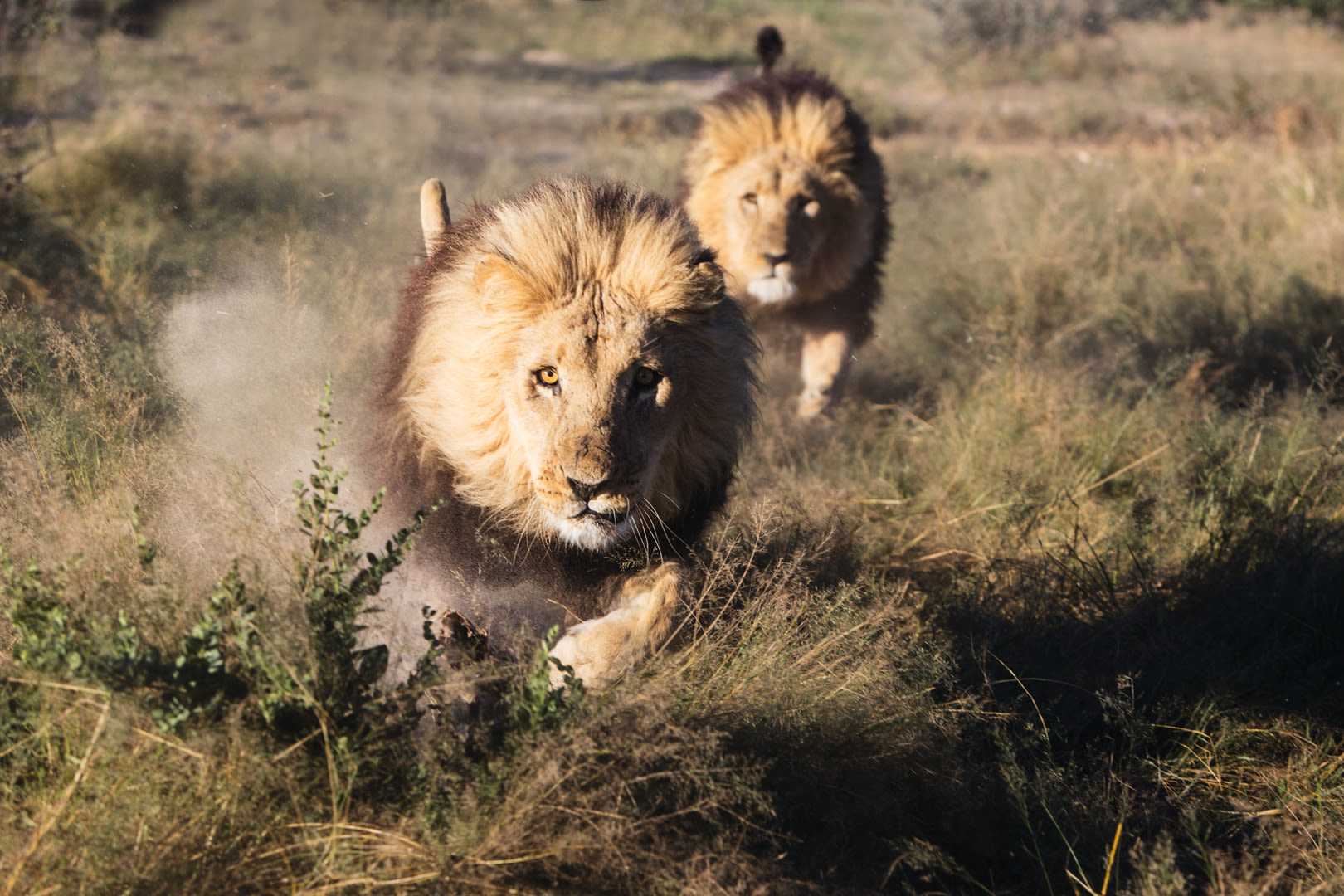
What is your task as a professional hunter?
Stephan Jacobs: My first duty is to make sure that we get enough international hunting guests to fulfil our hunting quota and provide us with the financial means necessary to run the conservancy. I am responsible for guiding guests on hunts and to make sure that the right animals are harvested. My team and I are also in charge of counteracting poaching together with the Ministry of Environment and Tourism. Distributing the meat between the villages is on my list of duties too. Through hunting, we provide the local population with more than 5,500 pounds of meat each year. And, last but not least, I am of course responsible to adhere to my agreement with the conservancy: I pay for my hunting contract, employ 12 staff members who I also provide food and housing for.
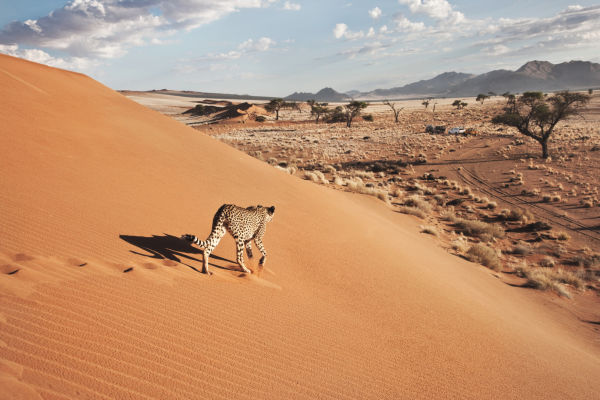
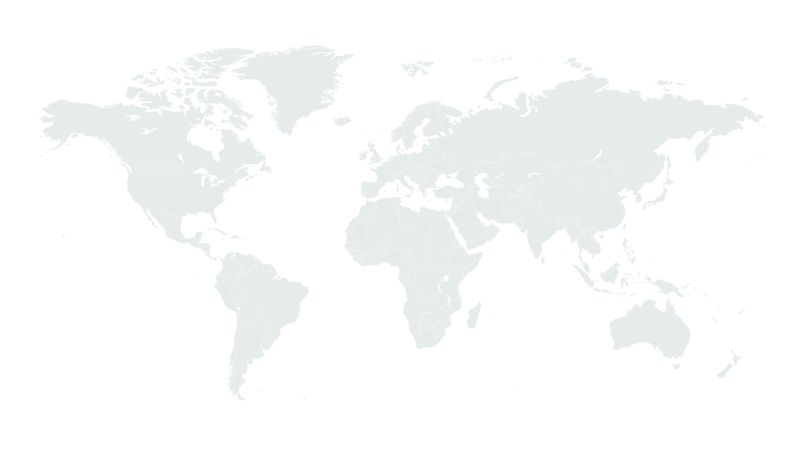
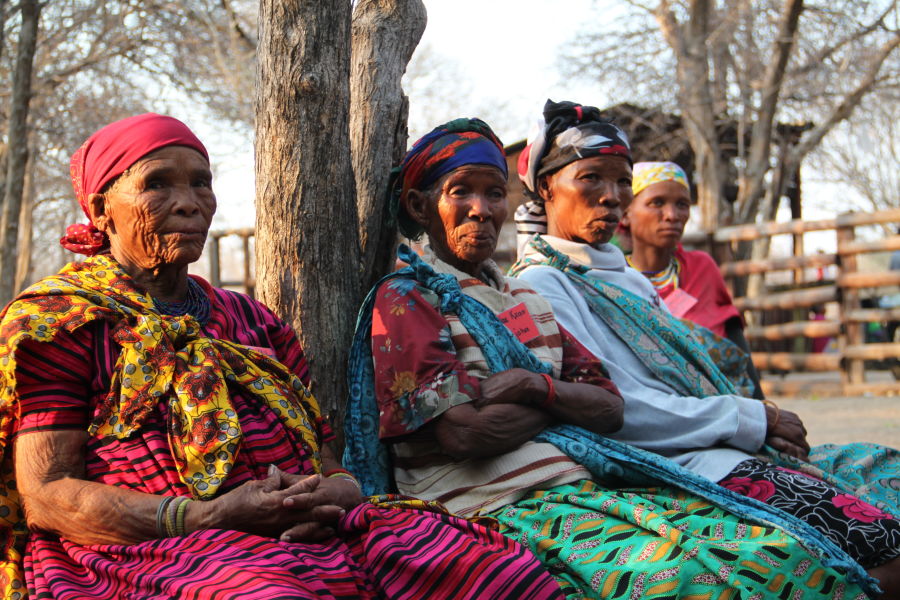

The peoples summarized by the term “San” are the native inhabitants of Namibia and southern Africa, and – thus – the longest-standing societies in the world. There are many different subgroups, e.g. Ju/’hoansi, Khwe, Hai||om, !Khomani, etc., that form the people of the San – each with their own culture, history, and tradition. According to research, they have been living in southern Africa for about 60,000 years. In the Nyae Nyae Conservancy, the Ju/’hoansi San people continue to live communally and sustain their traditional hunter-gatherer lifestyle. Today, the peaceful tribes amount to some 38,000 individuals in Namibia. In total, the San population worldwide is estimated at 100,000 people.
LEFT PHOTO: © NNDFN.ORG
In which way does the San community benefit from the hunting revenue?
Stephan Jacobs: The conservancy runs a central office, which takes care of all of the activities going on in Nyae Nyae. This office employees more than 25 people ranging from management to game scouts. The income generated through the hunting contract pays their salaries.
How does the hunting strategy in Nyae Nyae help to conserve San culture?
Stephan Jacobs: The San people were the first hunters/gatherers. However, this tradition is slowly disappearing because the younger generations are not interested in the traditional lifestyle anymore. By employing local trackers on the hunts we conduct, we try to keep the San culture alive. Practicing their tradition, they gain employment. In order to promote San culture, the San people have legal permission to hunt and gather in the area by traditional method (bow and poison arrow) to provide food for themselves and their families.

Quick facts about
the Nyae Nyae Conservancy
Official foundation: February 1998
Region: Otjozondjupa, Northeast of Namibia
Area: 2.23 acres
Approximate population: about 3,000 people, most of them belong to the Ju / `hoansi, a ethnic subgroup of the San
Find a map of all registered conservancies in Namibia here: www.nacso.org.na/conservancies
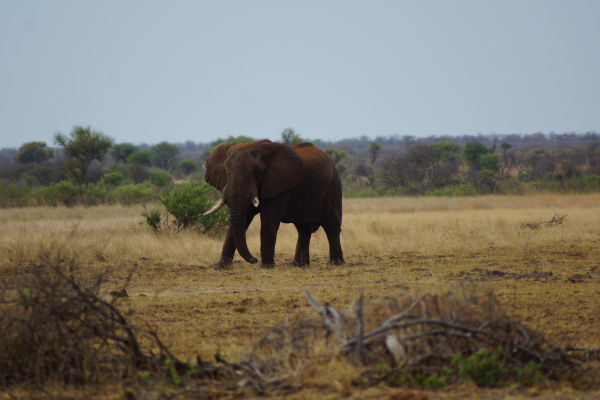
Please,
can you give us one example that demonstrates the benefits of the approach taken in Nyae Nyae?
Stephan Jacobs: Let’s take the elephant, the iconic species of Nyae Nyae. I have done some research on how elephant numbers have developed over the years. I interviewed many elderly locals and spoke to the first operator of the area, late Mr. Grellmann. He used to operate in the area for ten years during the late 1980s. According to the information I could gather, the first elephants resident in the area were reported to be seen after a really dry year in the late 1970s. When the first hunting quota was issued in the mid-1980s, it was estimated that only 50 bulls lived in the area. Today, we have 1,500+ elephants prospering in the Nyae Nyae Conservancy. So, we see that elephant numbers have grown tremendously in the last decades.


Stephan Jacobs: We are very fortunate that poaching is not a problem in Nyae Nyae. I would say that this is because the local people really see the benefits they gain from conservation.
What methods are used to hunt game in Nyae Nyae according to the established quota?
Stephan Jacobs: There are rules and regulations set by the Ministry of Environment and Tourism, on how and when hunting is allowed to take place. We concentrate on taking out only the oldest animals because harvesting them has no effect on the populations. Most of the hunting is done by tracking. Together with the local San trackers, we find an adequate track and follow the animal. Once we catch up with it, we decide if that animal is adequate to harvest or not. We take a good look at age, general condition and other criteria. On average, we look at approximately 100 elephant bulls before we find one that is suitable.

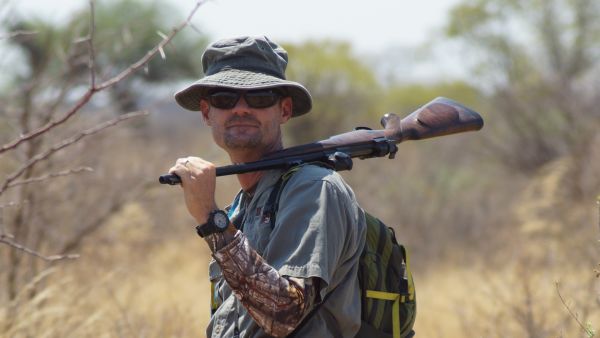
Stephan Jacobs’ ancestors came to Africa at least four generations ago. Growing up on a cattle ranch in Namibia not very far from the Nyae Nyae Conservancy, he always loved the bush. Although nobody in his family hunted, he started hunting at a very young age with the San workers of the farm. Nothing made him feel as alive as spending time in nature. After finishing school, he followed his brother’s advice to do what he loved most. Therefore, he made his passion a profession and started his training to become a professional hunter. After two years, he got his license to guide plains game hunts. Today, more than 20 years later, he is still hunting and running his own safari company in Namibia. In 2012, he became responsible for the Nyae Nyae Conservancy and has been hunting there since.

Stephan Jacob’s
favorite game meat recipe
My favorite local game meat would be Roan, particularly its back strap. Hang the meat for a few days then slice the back strap into half-inch thick slices. Tenderize the meat slightly. Put the meat pieces (steaks) in a container with olive oil, salt, pepper and barbeque spice. Leave them in the container for at least six hours. Then heat up a thick steak pan on the fire and fry the steaks very swiftly. Serve them with chips and a salad. It is to die for.
SWAROVSKI OPTIK supports hunting whenever it is carried out sustainably, responsibly, legally, and in harmony with nature. The way the Nyae Nyae Conservancy manages natural resources, shows that hunting can promote wildlife conservation with clear measurable results through the sustainable use of game and nature. Although it might seem like a contradiction in terms, the Nyae Nyae Conservancy proves that hunting rare species can contribute to their conservation.
About the Nyae Nyae Conservancy
Nyae Nyae meaning ‘place without mountains, but rocky’ is the oldest and largest wildlife conservancy in Namibia. Located in the so-called Bushmanland in the northeast, on the border with Botswana, the Nyae Nyae Conservancy spreads over an area of approximately 2.23 acres of wilderness within the Kalahari Desert. The conservancy manages all visitors, tourism activities and hunting concessions. While the conservancy is a community based organization, the Ju/’hoansi San elect its leaders to derive benefits for its people through the sustainable use of their natural resources. It is home to numerous rare game species, like wild dogs, rhinos, roan and cheetahs. However, its main characteristic is the presence of elephants.

About the NNDFN
Founded in 1981, the Nyae Nyae Development Foundation of Namibia (NNDFN) supports the indigenous Ju/’hoansi San people of the Nyae Nyae area in the former eastern Bushmanland (Tsumkwe East). It empowers them to improve their quality of life economically and socially through the sustainable use of natural resources. The NNDFN backs the Nyae Nyae Conservancy, among other organizations.
About the Tsumkwe Tucsin Lodge
Managed by the Nyae Nyae Conservancy, the Tsumkwe Tucsin Lodge is the only accommodation facility available in the Nyae Nyae. At the heart of this remote land, the surrounding San villages offer a fraught, yet fascinating insight into the lives of Southern Africa's longest-standing inhabitants.

